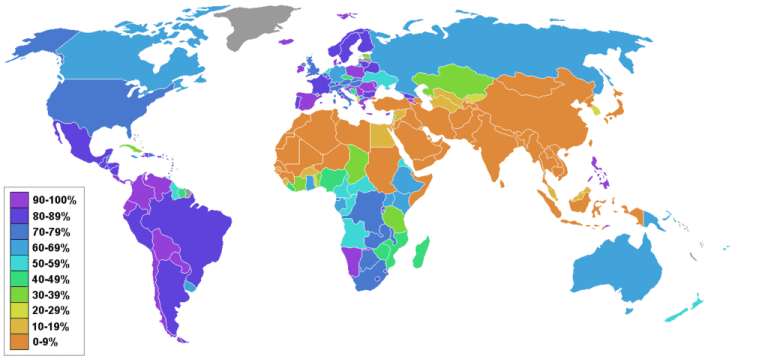But Islam is expected to grow even more, from 1.9 billion in 2020 to 2.8 billion in 2050, a jump of 47%, nearly the same number as Christians. In the United States, Islam will surpass Judaism as the second largest non-Christian religion, and in Europe Muslims will constitute 10% of the population.
But here are countries where Christianity will see its biggest growth by 2050. I am rearranging these by rate of growth:
1. Zambia. 43.2 million Christians, a growth of 147%.
2. Malawi. 41.9 million Christians, a growth of 142%.
3. Uganda. 81 million Christians, a growth of 105.7%.
4. Tanzania. 54.8 million Christians, a growth of 141.5%.
5. Madagascar. 44.4 million Christians, a growth of 91.4%.
6. Kenya. 79.8 million Christians, a growth of 79.5%.
7. Democratic Republic of the Congo. 141.8 million Christians, a growth of 73.93%.
8. Nigeria. 154.8 million Christians, a growth of 61.16%.
9. Philippines. 143.6 million Christians, a growth of 40.3%.
10. Ethiopia. 84.8 million Christians, a growth of 35.4%.
By comparison, the United States will have 262 million Christians, an increase of 3.6%. Though the percentage of Americans who profess Christianity has gone down from 90% in 1990 to 75.5% in 2020, the U.S. still has more Christians than any other country.
The posts referenced here draws on data from the Pew Research Center’s 2015 study The Future of World Religions: Population Growth Projections, 2010-2050 with 2020 data worked in. My impression is that the researchers multiplied the population growth by the percentage of Christians in each country to get their projections, the number of conversions, of course, being incalculable. But still, this is a lot of souls.
And a lot of Lutherans. According to Lutheran World Federation figures, Ethiopia has the largest Lutheran church in the world with 10.4 million members. Tanzania is second with 7.9 million. Madagascar is sixth with 4 million. Nigeria is thirteenth with 2.2 million.
If these projections are correct, by 2050 Ethiopia will have 14 million Lutherans. Tanzania will move into first place with 19 million. Madagascar will have 7.65 million. And Nigeria will have 3.5 million.
Such growth would be good news for world Lutheranism. And yet it also brings problems, as I’ve heard from Ethiopian Lutherans studying at Concordia Seminary here in St. Louis: recruiting and training more pastors; building more places of worship; and, always, the need for more money to serve poor people in a poor country.
Still! Praise God for the vitality of these and other churches. I hope we western Christians will support them and learn from them.
Here are some other tidbits from the Pew Study:
- Atheists, agnostics and other people who do not affiliate with any religion – though increasing in countries such as the United States and France – will make up a declining share of the world’s total population.
- India will retain a Hindu majority but also will have the largest Muslim population of any country in the world, surpassing Indonesia.
- Four out of every 10 Christians in the world will live in sub-Saharan Africa.
Illustration: Christianity percentage by country by multiple, CC BY 3.0 <https://creativecommons.org/licenses/by/3.0>, via Wikimedia Commons. [go to the link for a larger view]
















